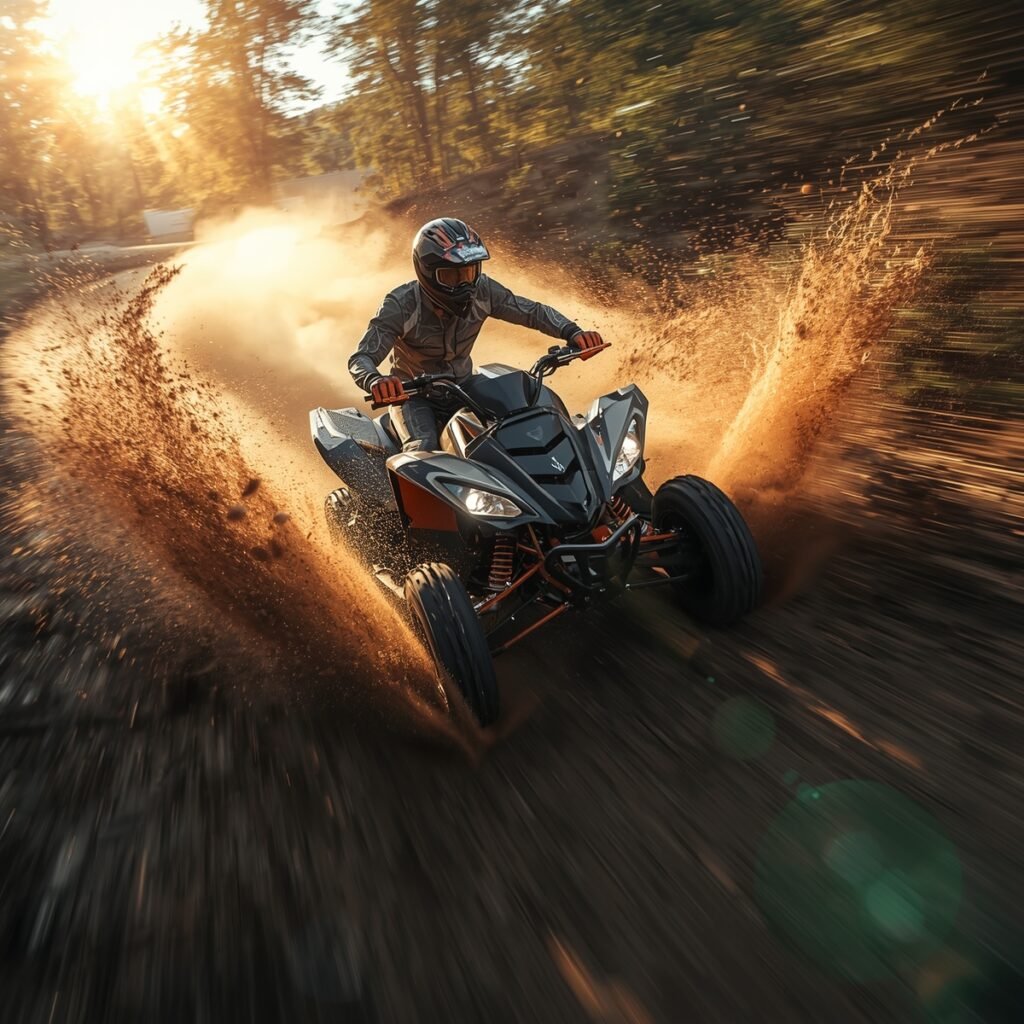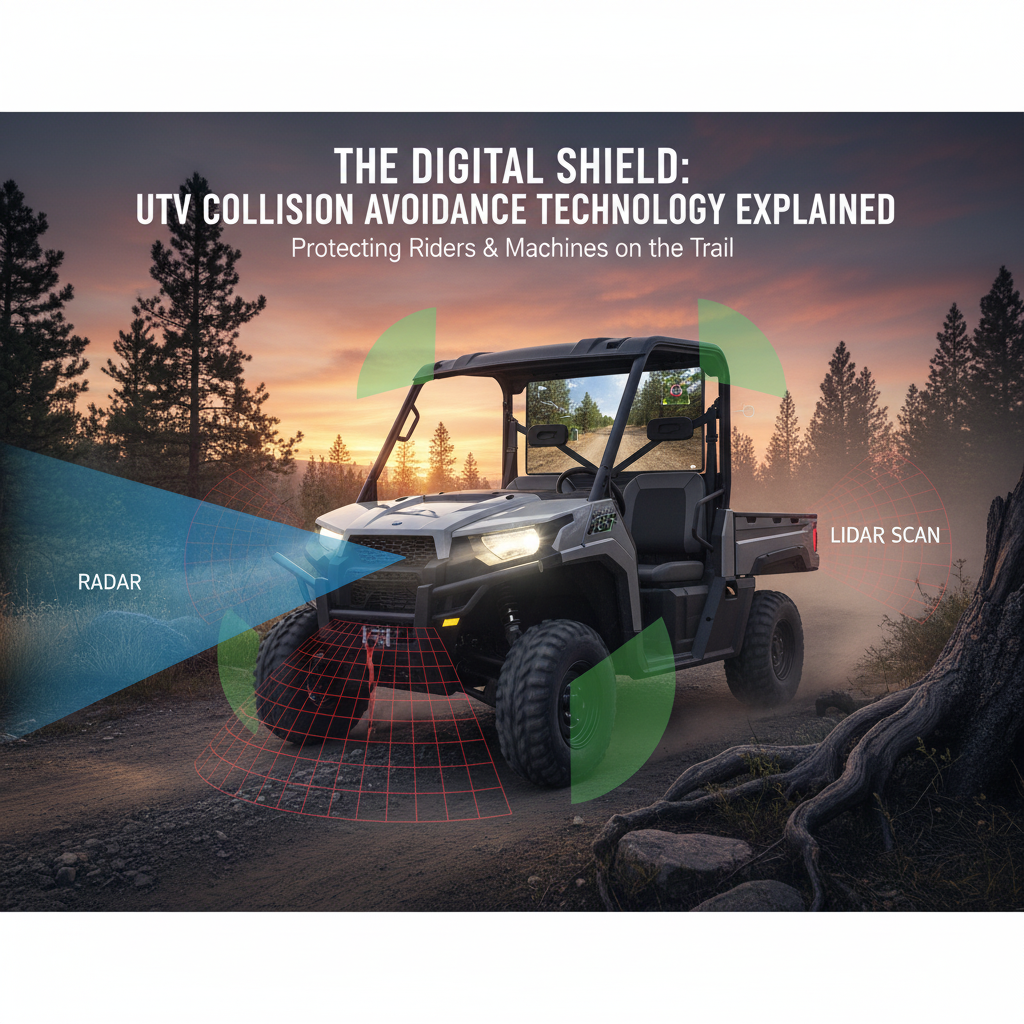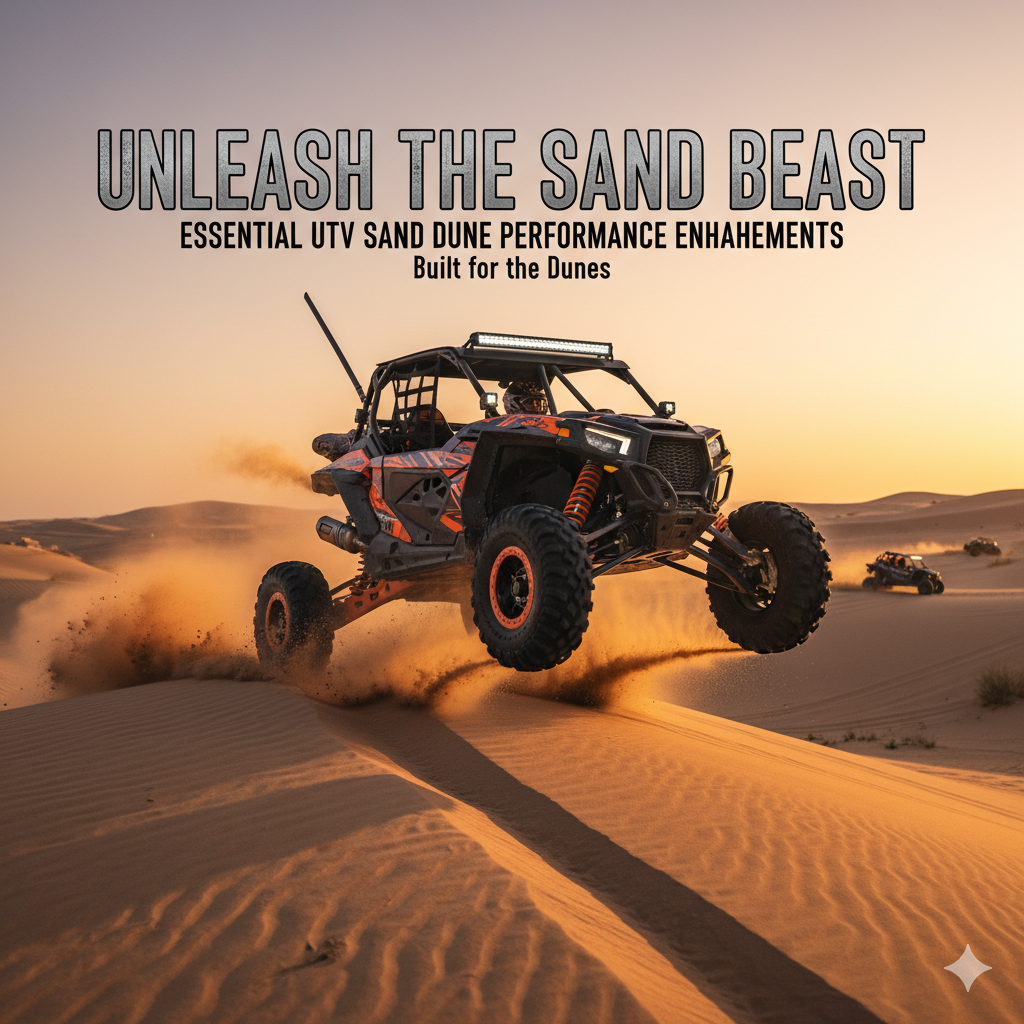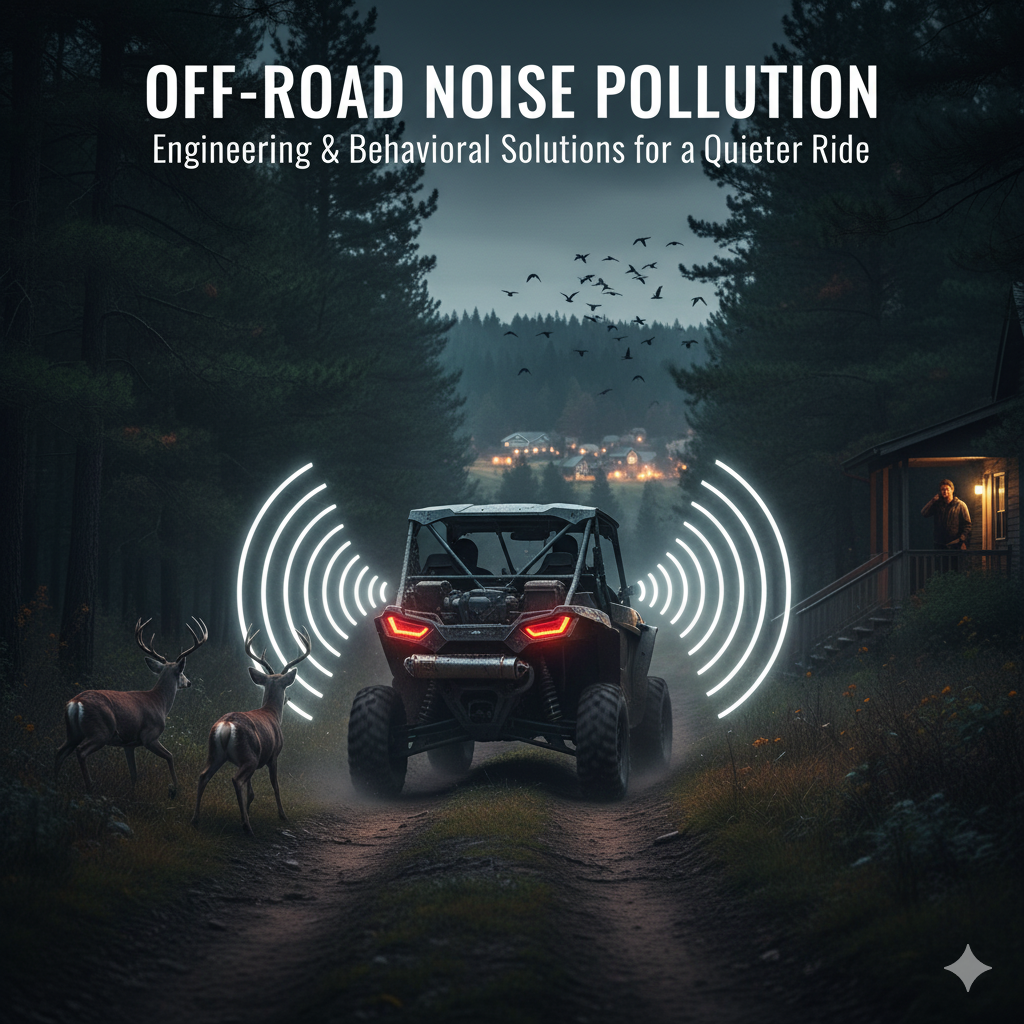Introduction: Beyond the Snapshot
For many, the off-road adventure is an escape—a pursuit of raw power, breathtaking landscapes, and the exhilarating freedom of the trail.
Yet, when it comes to preserving these memories, the photos taken often fail to capture the grit, the adrenaline, and the sheer scale of the experience.
A simple snapshot of a parked vehicle, while a record of a trip, rarely conveys the feeling of the journey.
The difference between a simple photo and a compelling image lies in the art of visual storytelling.
It is not about merely documenting a machine in a location;
it is about creating a visual narrative that transports the viewer into the heart of the adventure, allowing them to feel the excitement, witness the struggle, and appreciate the triumph.
To create this emotional connection, every technical decision—from the angle of a shot to the choice of a lens—becomes a tool for a larger purpose.
A truly great off-road photo is one that evokes a feeling, whether it is the quiet solitude of a mountain vista, the thrill of a steep climb, or the camaraderie of a group ride.
These images are infinitely more memorable and shareable because they transform the subject from a machine into a part of a larger human experience, capturing the essence of the moment itself.
The Power of Composition: Framing Your Adventure
Composition is the foundational element that elevates a photograph from a simple record to a work of art.
It is the deliberate arrangement of elements within the frame to create visual harmony and guide the viewer’s eye.
While the temptation is often to place the subject dead-center, a more dynamic and engaging image can be achieved by employing well-established principles.
One of the most effective techniques for off-road vehicle photography is using low-angle shots.
By positioning the camera at or below the height of the ATV or UTV, the vehicle is made to look more powerful and larger than life, emphasizing its ruggedness and dominance over the terrain.
Beyond this, the rule of thirds offers a powerful way to turn a static image into a dynamic composition.
By imagining a grid and placing the vehicle along one of the intersecting lines rather than in the center, a more attractive and balanced image is created.
The environment itself is a valuable tool for composition.
.
Natural elements can be used to create a “frame within a frame,” such as using overhanging tree branches or the edge of a rock formation to frame the scene and add a sense of depth.
Similarly, “leading lines” like trails, tire tracks, or rivers can be used to direct the viewer’s gaze toward the main subject, creating a sense of depth and perspective.
While a single, perfectly composed “hero shot” is a worthy goal, a series of photos tells a richer, more complete story.
This approach is akin to creating a visual narrative with a beginning, a middle, and an end.
An effective series incorporates a variety of shot types to achieve this.
Wide or establishing shots set the scene, showing the vehicle in the vastness of the landscape to convey the scale of the adventure.
Medium shots capture the primary action and context, such as the vehicle cresting a dune or splashing through a mud hole.
Finally, close-up or detail shots focus on the small elements that add texture and humanity to the story, such as a mud-splattered tire, a close-up of a rider’s gloved hand on the handlebar, or a unique decal on the vehicle.
This thoughtful variety ensures the visual narrative remains engaging and comprehensive.
Technical Know-How: Mastering the Moment
Freezing the Action: Settings for a Crisp Shot
Capturing the dynamic movement of an off-road vehicle presents a unique technical challenge.
The key is to manage the camera’s shutter speed to either freeze the action or convey a sense of motion.
To successfully freeze a fast-moving subject like an ATV or UTV kicking up dust or splashing through water, a fast shutter speed is essential.
A general guideline is to use a shutter speed of 1/1000s or faster to ensure the subject is perfectly sharp and free of motion blur.
This setting is crucial for capturing the “decisive moment” of a jump or a splash, preserving every detail of the brief, explosive action.
An alternative and more advanced creative technique is called panning.
Instead of freezing the action, panning uses a slightly slower shutter speed, such as 1/80s, while the photographer moves the camera along with the subject’s motion.
This results in a sharp, focused subject against a blurred background, which powerfully conveys a sense of speed and dynamism.
The choice between freezing the action and creating motion blur is a deliberate creative decision that depends on the desired outcome—a sharp, frozen moment of impact versus a dynamic portrayal of velocity.
Both techniques tell a different story, and both are essential for a complete off-road photography portfolio.
For unpredictable moments, a camera’s burst mode is an invaluable tool, allowing the capture of multiple shots in rapid succession to increase the odds of getting the perfect frame.
Harnessing Light: Time of Day and Direction
Lighting is one of the most critical factors in photography, and its correct use can transform an ordinary shot into a spectacular one.
Natural light is a photographer’s most valuable tool, and the time of day a photo is taken can make a significant difference.
The “golden hour,” which occurs during sunrise and sunset, is widely considered the best time for photography.
During these times, the sun is low on the horizon, creating soft, warm, and flattering light that adds a dramatic quality to landscapes and subjects.
Another simple but crucial rule is to pay attention to the direction of the light.
When possible, position the subject so that the primary light source, such as the sun, is behind the photographer.
This ensures that the subject is well-lit and avoids the issue of backlighting, where the subject appears as a dark silhouette against a bright background.
While the golden hour is ideal, the reality of an off-road adventure is that it is not always possible to choose the time of day for a shoot.
It is important to know how to handle less-than-ideal lighting conditions, such as the harsh, direct light of midday.
In these situations, photographers can focus on composition techniques that use the harsh light to their advantage, such as capturing dramatic shadows or focusing on close-up detail shots rather than broad landscapes.
This pragmatic approach ensures that valuable photographic opportunities are not missed simply because the lighting is not perfect.
The Right Gear for a Bumpy Ride
Choosing Your Camera: Ruggedness vs. Quality
The off-road environment presents unique challenges for camera gear.
Dust, mud, water, vibration, and impacts are constant threats that can quickly damage sensitive equipment.
The choice of camera is a careful balancing act between rugged durability and high-quality image capture.
For the most convenient option, a smartphone is often the go-to device.
Modern smartphones offer high-quality images and videos with excellent built-in stabilization.
However, they are generally not built to withstand the punishing conditions of the trail without significant protection.
For action-packed, immersive point-of-view (POV) shots, action cameras are the undisputed champion.
Models like the GoPro Hero series and the DJI Osmo Action are purpose-built to be waterproof, shock-resistant, and tough enough to mount directly on a helmet or vehicle.
Their superlative stabilization technology, such as GoPro’s HyperSmooth, makes them a game-changer for producing silky-smooth video even on the roughest terrain.
For those seeking a dedicated camera with greater control than an action camera but with the same level of ruggedness, compact cameras are an excellent choice.
The OM Systems TG-7 and the Fujifilm FinePix XP140 are notable examples, offering impressive durability ratings for water, drops, and even crushing pressure.
It is important to note that many “weather-sealed” camera claims from manufacturers do not have a formal IP (ingress protection) rating.
Olympus is a rare exception to this, and this distinction is crucial for photographers who plan to operate in truly wet or dusty conditions.
Professional-level mirrorless and DSLR cameras offer the highest image quality and creative control but require significant care and protection.
Their use in a harsh environment requires a thorough understanding of their weather-sealing limitations and the use of external protective gear.
The following table provides a comparison of some of the top rugged compact cameras, highlighting the critical durability and performance specifications for off-road use.
Table
Essential Gear for a Bumpy Ride: Protection and Stability
Beyond the camera itself, a well-equipped photographer relies on a selection of accessories to protect their gear and execute their creative vision.
A rugged, weatherproof camera bag is a foundational piece of equipment, providing an organized and secure way to transport gear.
For on-the-go protection, a neoprene camera cover or a camera cage can shield the camera from unexpected bumps, knocks, and scratches.
Hard-shell cases offer a higher level of protection for storage and transport.
Lens filters serve a dual purpose.
A UV filter acts as a sacrificial layer of protection for the front element of the lens, shielding it from dust and debris.
.
Neutral Density (ND) filters are like sunglasses for the camera, reducing the amount of light entering the lens.
This allows for the use of slower shutter speeds in bright conditions, a crucial technique for creating motion blur in videos and dynamic shots of water.
Given the harsh reality of the off-road environment, dust is an inevitability.
A proper cleaning kit, including a rocket blower, a soft brush, and microfiber cloths, is essential for routine maintenance.
The use of a blower is critical before wiping a lens to avoid scratching the glass by dragging abrasive dust particles across it.
Securing a camera to a vehicle or a person is fundamental for capturing stable, hands-free footage.
The choice of mount should be directly tied to the desired shot type.
For stable, cinematic cockpit footage,
a roll bar mount is the ideal choice,
clamping securely to any tube and often rotating for on-the-fly angle adjustments.
For a first-person perspective,
a helmet or chest mount provides an immersive look at the rider’s experience.
For flexible placement,
adhesive mounts or suction cups are versatile options for attaching a camera to a vehicle’s body, hood, or windshield.
Brands like Quad Lock and GoPro offer a variety of specialized mounting solutions that are vibration-tested and terrain-proven.
The following table provides a quick guide to essential gear, linking each item to its specific purpose and the problem it solves in the off-road environment.
Table
The Eye in the Sky: Drones and Responsible Flying
Drones for the Off-Road Photographer: A New Perspective
A drone is perhaps the most transformative tool in the modern off-road photographer’s arsenal.
It provides a unique, birds-eye perspective that allows for the capture of epic, cinematic shots that would be impossible to get from the ground.
For those interested in adding aerial cinematography to their repertoire, a tiered approach to drone selection is advisable.
Entry-level models like the DJI Mini 4 Pro offer an excellent starting point, providing a lightweight design and great image quality at a more accessible price point.
For a balance of features and image quality, mid-range drones such as the DJI Air 3 are a popular choice.
The higher end of the market, dominated by the DJI Mavic 3 series, offers the highest image quality with larger sensors, variable apertures, and the ability to capture cinematic shots with professional-grade latitude for editing.
Moving beyond basic flight, learning specific cinematic maneuvers can consistently produce professional-looking footage.
The Orbit is a classic “epic” shot where the drone circles a fixed point, such as a vehicle or a tree, to show the subject in its surrounding environment.
A Forward Reveal involves flying the drone forward while slowly tilting the camera up, dramatically revealing the landscape ahead and creating a powerful sense of discovery.
Another powerful technique is the Dronie, the inverse of the reveal, where the drone flies backward and upward while keeping the camera fixed on the subject, creating an immersive, expansive feeling.
Learning these repeatable flight patterns is the key to consistently capturing cinematic, emotionally resonant footage that enhances the travel experience and makes memories feel more vivid.
The following table outlines these key cinematic drone shots, providing a simple guide for execution and the creative effect each shot produces.
Table
Navigating the Rules: Responsible Flying
The use of drones is not without its legal and ethical considerations, and responsible operation is paramount.
A crucial point of regulation is the designation of drones as both “motorized equipment” and “mechanical transport.”
As a result, it is strictly prohibited to take off from, land in, or operate drones from congressionally designated wilderness areas.
These areas are protected to provide opportunities for solitude and quiet, and drone operations would violate that purpose.
Furthermore, Temporary Flight Restrictions (TFRs), often put in place for events or wildfires, must always be respected.
Beyond the law, a set of key safety and ethical guidelines must be followed. Pilots must always keep the drone within their visual line of sight and remain clear of all manned aircraft.
It is also essential to respect wildlife by launching the drone at least 100 meters away and avoiding flying over or near animals, as this can cause them significant stress and harm.
Finally, for the sake of community respect, drones should not be flown over or in close proximity to populated and noise-sensitive areas like campgrounds or trailheads.
Adhering to these regulations and best practices is not just about compliance;
it is about demonstrating responsible stewardship of the environment and showing respect for the community.
By operating drones ethically, off-road photographers contribute to a positive public perception of the entire off-roading community,
showing that this pursuit can coexist harmoniously with the preservation of nature and the solitude of the wilderness.
Finding Inspiration and Furthering Your Craft
From Trail to Timelessness: Post-Production
The journey to a compelling photograph does not end when the shutter is pressed.
Post-production is a critical final step that can make or break an image.
Basic adjustments such as increasing contrast and clarity can make details pop, while boosting saturation can bring out the vibrant colors of a landscape.
For maximum control and flexibility during editing, it is highly recommended to shoot in RAW format.
A RAW file, which is an uncompressed and unprocessed image file,
contains a wealth of data that offers far more latitude for editing than a standard JPEG,
allowing for nuanced adjustments to exposure and color.
A Curated List of Resources
To continue the journey of creative growth, there are numerous resources available for inspiration and education.
Instagram Photographers:
- Aaron Brimhall (@aaronbhall): Known for his dynamic and action-packed automotive photography, particularly his mesmerizing shots of dust clouds in desert environments.
- Tom Kahler (@tomkahler): A UK-based photographer who masterfully combines automotive, adventure, and lifestyle photography in his global campaigns.
YouTube Channels:
- Photography Education: Channels like Peter McKinnon and The Art of Photography offer tutorials on everything from gear reviews to editing tips, providing a solid foundation for any photography genre.
- Off-Road Adventure: For trail guides and vehicle reviews, channels like TFLoffroad and Trail Recon provide valuable and entertaining content.
- Extreme Action: To witness and learn from the most extreme off-road action, channels such as MadRam11 and BustedKnuckleVideo capture the raw excitement of rock bouncing and mud bogging.
Online Communities & Blogs:
- Trails Offroad: A comprehensive resource for trail guides and maps, featuring detailed information, videos, and community reviews.
- Off-Road Forums: Websites like IH8MUD and Race Dezert are invaluable forums with decades of archived content, offering a wealth of information and a strong sense of community for enthusiasts.
Conclusion: Go Get the Shot
The journey from a simple snapshot to a captivating visual story is a rewarding one. It requires more than just a camera;
it demands a blend of creative vision, technical knowledge, and the right gear.
By paying close attention to composition, mastering camera settings for action,
protecting your gear,
and understanding the power and responsibility of aerial photography,
a photographer can elevate their craft to new heights.
The trail is an endless source of inspiration,
offering a wealth of subjects from the raw power of the vehicles to
the vastness of the landscapes and the candid moments of human emotion.
The next time a ride is planned, it can be viewed not just as an adventure,
but as an opportunity to tell a powerful and timeless story.
Products not fetched from DB and/or API. Please check debug logs.




